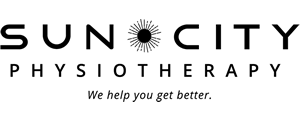Exercise after Pregnancy
Pregnancy and childbirth puts a woman’s body through one of her life’s most strenuous events. Laxity in the ligaments, an increase abdominal girth, an exaggerated forward tilt of the pelvis can alter the center of gravity, affecting dynamic stability of the spine and pelvis. Combined with the load of carrying a new baby and breastfeeding, these added stresses to the spine can lead to postural fatigue and discomfort. Physiotherapists are experts at analyzing posture and alignment and can prescribe postural exercises and advice on body mechanics.
Kegel exercises are an important part of pre-natal health. The Pelvic Floor muscles (PFM) lie at the base of the pelvis, and run from behind the pubic bone to the tailbone. Differentiate a PFM contraction from the buttock muscles. To avoid increasing intra-abdominal pressure, don’t hold your breath and push. Instead, think of pulling the two side walls of the vagina toward midline, and lift up inside. Hold this contraction for 10 seconds, without holding your breath.
Immediately after a vaginal delivery, many women find it hard to feel a contraction in their pelvic floor muscles. It works much easier if “muscle memory” exists from previous practice.
If you’re having difficulty with this, an internal examination by a women’s health physiotherapist can determine the extent of the problem. Other concerns, such as uncomfortable scarring after an episiotomy, can also be addressed.
We have 3 layers of abdominal muscles. 100% of women have some degree of Diastasis Recti, or abdominal separation in their third trimester of pregnancy. At 8 weeks post-partum, if the gap is marked (greater than 2 fingers width), if untreated it will likely still be a problem after a year. Diastasis Recti can aggravate low back problems and result in a midline “doming” of the abdomen under load. The underlying cause is an abnormal increase in intra-abdominal pressure during exertion, not the pregnancy itself.
If you suspect you have a Diastasis, try to avoid activities that strain on the abdominal wall. This would include sit-ups, especially over a large ball, heavy lifting, yoga postures that include back bends, Pilates “100’s”. This is until you have learned to contract the inner Transversus Abdominus (TrA) muscle to support the wall.
Two thirds of women with Diastasis Recti have some level of Pelvic floor dysfunction. The Pelvic Floor muscles and TrA work synergistically to support the pelvic organs, especially during exertion. Good tone in these muscles helps to prevent and treat prolapse and stress incontinence, which can show up in mid-life.
